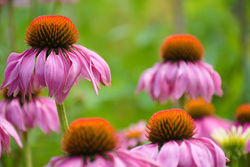11 popular perennial vines with white flowers
- Lars Wildes
- Jan 30, 2023
- 5 min read
Want to score some serious visual points in your garden without losing out on the overall harmony of your space?
Meet white perennial vines. An easy way to add texture without pulling focus from the stars of your garden — like blue hydrangea or bold purple lupines.
Another advantage of perennial vines is that you can use them to cover an old fence or create a privacy screen to hide your next outdoor Sunday brunch from your curious neighbors. (Just in case my neighbors read this… it’s not you, you’re great and always invited for brunch.)
The white-flowered perennial vines and climbers I’m mentioning in this list also attract bees and butterflies to your space — a must for anyone growing vegetables or fruit, too.
The only question is really… which vines should you go for? There are tons of options out there, but here are some of my all-time favorites.
Clematis
Trumpet vine
Wisteria
Jasmine
Honeysuckle
Star jasmine
Confederate jasmine
Passionflower
Winter Jasmine
Silver Lace Vine
Virginia Creeper
1. Clematis (Clematis spp.)
Clematis is a perennial vine with large, showy white flowers. The flowers have a distinctive shape, with four or more petals that are often ruffled or frilly.
Height: Varies depending on the species, but can reach up to 20 feet (6 meters)
Sun exposure: Full sun to partial shade
Soil type: Well-draining, humus-rich soil.
2. Trumpet vine (Campsis radicans)
The trumpet vine is a woody perennial vine that grows large, trumpet-shaped yellow-white flowers. The flowers are quite showy and attract hummingbirds and butterflies.
Height: Can reach up to 20-30 feet (over 6 meters)
Sun exposure: Full sun
Soil type: well-draining, loamy soil
3. Wisteria (Wisteria spp.)
Wisteria is a woody perennial vine blooming with clusters of fragrant, white flowers. The flowers are quite showy and are often used in cut flower arrangements.
Height: Can reach up to 20-30 feet (over 6 meters)
Sun exposure: Full sun to partial shade
Soil type: well-draining, fertile soil.
4. Jasmine (Jasminum spp.)
Jasmine is a perennial vine exploding with fragrant, white flowers. The flowers are usually star-shaped and are often used in perfumes and teas.
Height: Can reach up to 20 feet (6 meters)
Sun exposure: Full sun to partial shade
Soil type: well-draining, fertile soil.
5. Honeysuckle (Lonicera spp.)
Honeysuckle is a perennial vine dripping with clusters of fragrant, white flowers. The flowers are followed by red or orange berries.
Height: Can reach up to 20 feet (6 meters)
Sun exposure: Full sun to partial shade
Soil type: well-draining, fertile soil
6. Star Jasmine (Trachelospermum jasminoides)
Star Jasmine is a woody evergreen vine boasting clusters of fragrant, star-shaped white flowers. The flowers are quite showy and are often used in cut flower arrangements.
Height: Can reach up to 20 feet (6 meters)
Sun exposure: Full sun to partial shade
Soil type: well-draining, fertile soil
7. Confederate Jasmine (Trachelospermum jasminoides)
Confederate Jasmine is a woody evergreen vine flooded with clusters of fragrant, white flowers. The flowers are quite showy and are often used in cut flower arrangements.
Height: Can reach up to 20 feet (6 meters)
Sun exposure: Full sun to partial shade
Soil type: well-draining, fertile soil
8. Passionflower (Passiflora spp.)
Passionflower is a perennial vine showing off with large, showy white flowers. The flowers have a distinctive shape, with a central corona and a fringe of petals.
Height: Can reach up to 20 feet (6 meters)
Sun exposure: Full sun to partial shade
Soil type: Well-draining, humus-rich soil.
9. Winter Jasmine (Jasminum polyanthum)
Winter Jasmine is a deciduous perennial vine with clusters of fragrant, yellow, or white flowers in late winter or early spring.
Height: Can reach up to 10-15 feet (over 3 meters)
Sun exposure: Full sun to partial shade
Soil type: well-draining, fertile soil.
10. Silver Lace Vine (Polygonum aubertii)
Silver Lace Vine is a perennial vine that blooms with delicate, lacy white flowers in late summer and early fall. The leaves are green and have a silver undertone.
Height: Can reach up to 20 feet (6 meters)
Sun exposure: Full sun to partial shade
Soil type: well-draining, fertile soil
11. Virginia Creeper (Parthenocissus quinquefolia)
Virginia Creeper is a perennial vine that produces clusters of small, greenish-white flowers in late spring and early summer. The leaves are green and turn red in the fall.
Height: Can reach up to 50 feet (15 meters)
Sun exposure: Full sun to partial shade
Soil type: well-draining, fertile soil.
When it comes to adding a white flowering climber or vine to your garden, you have plenty of options to choose from. Especially if you're looking to cover a sunny, south or west-facing wall. These walls absorb heat from the sun throughout the day and release it at night, making them ideal for climbers and vines that aren't as hardy.
Clematis is always a great option — and it’s super popular in gardens across the globe. You’ll find several varieties that produce beautiful white flowers.
Clematis are perfect for covering walls, arches, pergolas, fences, and even unsightly tree stumps.
Clematis Armandii has saucer-shaped, scented single white flowers and dark, glossy, evergreen leaves.
Clematis Miss Bateman is a mid-sized variety that has satin-white blooms with contrasting stamens of creamy filaments and dark red anthers.
Jasmine is also a great choice for fragrant flowers that even your neighbors will thank you for planting.
Jasmine officinale is a great choice. It has mid-summer blooms continuing right through to early autumn.
Jasmine Devon Cream produces larger flowers with even more fragrance and reaches a height of 2-2.5 meters, making it suitable for pots and containers.
And don’t forget my climbing vine of choice, the Wisteria Alba. It's a white-flowering Japanese wisteria with long clusters of fragrant white flowers. Or go for the Actinidia Kolomikta (variegated kiwi vine) with small cup-shaped white flowers in spring-summer above attractively variegated, heart-shaped foliage.
The best thing about perennial vines is that they'll come back year after year, giving you the chance to enjoy their white flowers every spring and summer.
If you’d like to know more about what grows well in your area, talk to a local plant nursery or find your favorite garden nerd and ask them for help. Whatever you plant, you can’t really go wrong with a gorgeous vine with just-as-gorgeous white flowers.
What’s the difference between a vine and a climber?
A vine is a plant that uses its stem to support itself as it grows upward. Vines are characterized by their long, slender stems and the ability to cling to surfaces using tendrils, aerial roots, or other specialized structures. They can be either woody or herbaceous and can grow either on the ground or on other vegetation.
A climber is a plant that climbs up walls, fences, trellises, or other structures using tendrils, twining stems, or other specialized structures. Climbers are similar to vines in that they use their stems to support themselves as they grow upward, but they are typically considered to be plants that are grown specifically to cover vertical surfaces.
In summary, all climbers are vines, but not all vines are climbers, as a vine can grow on the ground or on other vegetation.






Comments